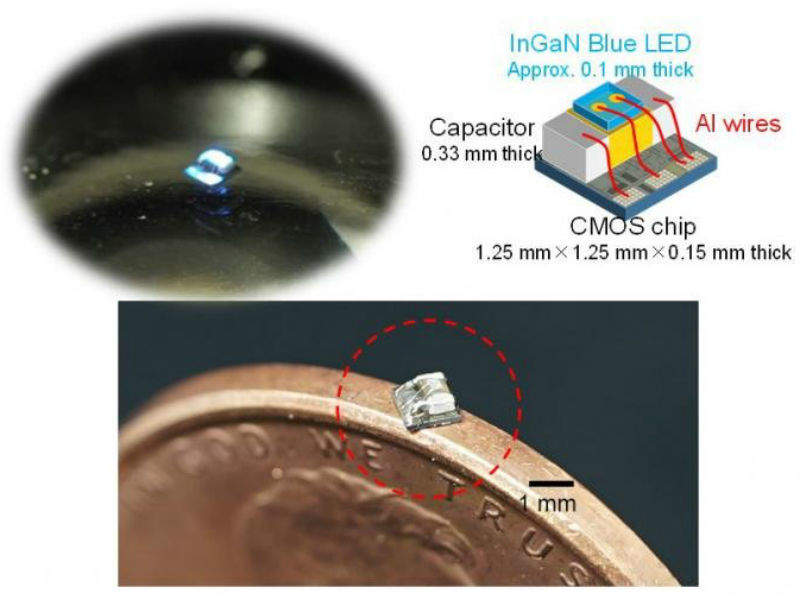
Researchers at the Nara Institute of Science and Technology (NAIST) have developed a tiny implantable device that can be used to control brain patterns.
The implant, which is the same size as the width of a coin, works by converting infrared light into blue light to control neural activity. It is both the smallest and the lightest wireless optical biodevice to ever be reported.
Light can activate certain proteins in the brain to change brain patterns. Scientists have previously implanted optical devices in mouse models to control behaviour with nothing more than light of specific wavelengths as a stimulus. However, the devices used in these previous experiments are often bulky and can cause discomfort and distress.
NAIST associate professor Takashi Tokuda has been investigating ways to tackle this problem by miniaturising implantable optical devices. He describes his creation as ‘the world’s smallest wireless optical neural stimulator’.
Miniaturising implantable devices has been hindered by a dependency on electromagnetics. Both voltage and current decrease with a reduction in size. However, the voltage of a device dependent on photovoltaics is not affected by size.
Tokuda and his research team built used this property to create their device, which uses a complementary metal-oxide semiconductor that controls photovoltaic power.
How well do you really know your competitors?
Access the most comprehensive Company Profiles on the market, powered by GlobalData. Save hours of research. Gain competitive edge.

Thank you!
Your download email will arrive shortly
Not ready to buy yet? Download a free sample
We are confident about the unique quality of our Company Profiles. However, we want you to make the most beneficial decision for your business, so we offer a free sample that you can download by submitting the below form
By GlobalDataHe said: “We integrated two sets of photovoltaic cells onto semiconductor chips. Ten cells were integrated for powering, and seven cells for biasing.”
The device contains an InGaN LED chip, which causes it to emit blue light. However, it can be activated with infrared light, which is used in many light therapies because it penetrates deep into the body, unlike blue light which remains at the surface. The infrared feature means that the device can be implant several centimetres into the body.
The researchers acknowledge that the device will need to be modified before it reaches full potential.
Tokuda said: “The device can be applied only for pulse stimulations and requires a charge time for each stimulation. Most optogenetics use multiple pulses. We need to improve the power receiving and conversion efficiency.”



